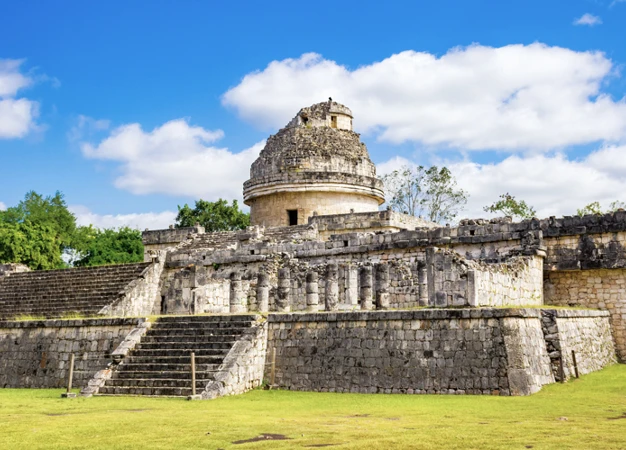The secrets of planetary alignments in ancient art and architecture have long puzzled historians, archaeologists, and astronomy enthusiasts alike. These enigmatic connections between celestial bodies and human creations provide a captivating window into the past. The intricate designs, hidden symbols, and strategic alignments found in ancient artworks and architectural marvels tell a story of ancient beliefs, astrological beliefs, and construction techniques that were deeply influenced by planetary alignments. By delving into the significance and symbolism of these planetary alignments, we can begin to unravel the mysteries left behind by our ancestors and gain a deeper understanding of their profound connection to the cosmos.
Contents
- Ancient Art and Architecture: A Window into the Past
- The Significance of Planetary Alignments
- Unveiling the Secrets: Analyzing Ancient Artworks
- Decoding Architectural Marvels: Uncovering Planetary Alignments
- Exploring the Astrological Significance
- The Legacy of Planetary Alignments
- Conclusion
-
Frequently Asked Questions
- What is the significance of ancient art and architecture?
- How did planetary alignments influence ancient construction?
- What can we learn from studying ancient artworks?
- How did ancient civilizations incorporate planetary alignments in their art?
- What are some famous examples of ancient structures that showcase planetary alignments?
- Did ancient civilizations have a belief in astrology?
- What kind of symbols and meanings can be found in ancient artworks?
- How did ancient builders align their structures with celestial bodies?
- What role did planetary symbolism play in ancient art and architecture?
- How do planetary alignments in ancient art and architecture continue to impact us today?
- References
-
Frequently Asked Questions
- How did ancient civilizations determine planetary alignments?
- What were the reasons behind ancient civilizations’ fascination with planetary alignments?
- Did ancient civilizations incorporate planetary alignments in their artwork?
- What are some common symbols related to planetary alignments in ancient art?
- How do researchers analyze ancient artworks to identify planetary alignments?
- What impact did planetary alignments have on ancient construction?
- Can you provide examples of ancient structures that showcase planetary alignments?
- What are some hidden symbols and meanings associated with planetary alignments in ancient art?
- How did ancient civilizations interpret the astrological significance of planetary alignments?
- Why is it important to preserve and conserve ancient artworks depicting planetary alignments?
- References
- Read More
Ancient Art and Architecture: A Window into the Past
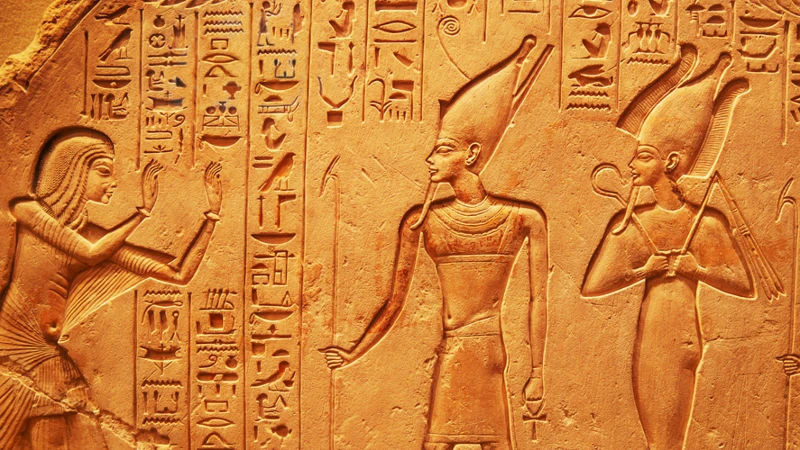
Ancient art and architecture serve as a mesmerizing window into the past, allowing us to catch a glimpse of the beliefs, culture, and ingenuity of civilizations long gone. These masterpieces of human creativity are not merely aesthetic expressions but also repositories of historical knowledge and deep symbolism. Ancient art encompasses various forms such as cave paintings, pottery, sculptures, and intricate textiles. These artworks often reflect the cosmological beliefs and mythological narratives of ancient societies. Architecture, on the other hand, showcases the technical prowess and architectural ingenuity of ancient civilizations. Magnificent structures like the pyramids of Egypt, the temples of ancient Greece and Rome, and the awe-inspiring ruins of Machu Picchu in Peru leave us in awe of the engineering and architectural capabilities of our predecessors. By studying these artifacts, we can decipher the values, social structures, and ideologies of ancient societies. The art and architecture of a civilization act as a time capsule, allowing us to explore their cultural, religious, and technological advancements. Through the lens of these ancient creations, we gain valuable insights into the minds and lives of those who came before us. Ancient art and architecture truly provide us with a unique perspective on the past and a deeper appreciation for the rich tapestry of human history.
The Significance of Planetary Alignments
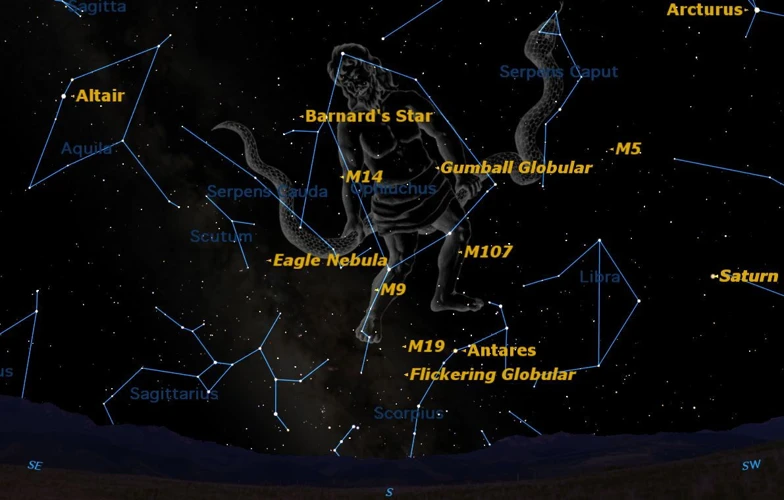
Planetary alignments hold a profound significance in the realms of ancient beliefs and astrological practices, as well as their influence on ancient constructions. These alignments refer to the positioning of celestial bodies, such as planets and stars, in relation to each other and the Earth. Ancient civilizations attributed great importance to planetary alignments and believed that they held immense power and influence over human affairs. Astrology, the study of how celestial bodies affect human lives, played a significant role in understanding these alignments. Planetary alignments were believed to impact various aspects of life, including communication, decision-making, and even personal characteristics. For example, the power of Mercury in astrology is associated with communication skills and decision-making abilities. These beliefs greatly influenced the construction of ancient sites and monuments, with alignments carefully incorporated into the design and orientation of structures. The alignments were believed to harness cosmic energy and bring harmony and balance to the built environment. The Great Bear, also known as Ursa Major, was often revered in ancient cultures and considered a significant celestial symbol. Understanding the significance of planetary alignments allows us to delve deeper into the ancient world, exploring their spiritual beliefs and the intricate relationship between people and the cosmos.
Ancient Beliefs and Astrology
Ancient societies were deeply influenced by their beliefs and the celestial bodies that adorned the night sky. Astrology played a significant role in their understanding of the world and their place within it. Ancient astrological beliefs centered around the notion that the movements and positions of the planets and stars held immense significance and could impact various aspects of human life. They believed that the celestial bodies had the power to influence individual destinies, predict events, and guide decision-making processes. For example, the planet Mercury was believed to have a strong influence on communication and decision-making, while the Great Bear, also known as Ursa Major, was associated with divine power and guidance. These astrological beliefs were intricately woven into the fabric of society, influencing everything from daily routines to major life decisions. To better understand their connection to the celestial realm, ancient civilizations observed and recorded the movements of the celestial bodies, noting their alignments and patterns. This knowledge was then integrated into their art and architecture, creating a visual representation of their cosmological beliefs. From zodiac symbols depicting the twelve astrological signs to celestial motifs adorning temple walls, the influence of astrology on ancient cultures is evident in their artistic expressions. The fascinating interplay between ancient beliefs and astrology provides us with a deeper understanding of how these civilizations perceived the world around them and sought to find meaning in the grand cosmic tapestry.
Impact on Ancient Construction
The impact of planetary alignments on ancient construction was profound and far-reaching. Ancient civilizations believed that the positions and movements of celestial bodies had a direct influence on their daily lives, including the construction of their monumental structures. The alignment of sacred sites, temples, and pyramids with specific celestial events and phenomena was no coincidence but a deliberate architectural choice. These alignments were considered sacred and infused the structures with a higher spiritual significance.
One notable example is the alignment of the ancient Egyptian temples with the stars of the constellation Orion. The three pyramids at Giza, known as the Great Pyramids, mirror the arrangement of the stars in Orion’s belt. This cosmic connection between architecture and the heavens was believed to establish a link between the earthly realm and the divine, creating a sacred space for spiritual rituals and ceremonies.
Similarly, in ancient Mesoamerica, the Mayans meticulously aligned their temples and cities with celestial events, particularly with the movements of Venus. The Maya believed that Venus represented a deity associated with warfare and fertility. They constructed pyramids and observatories to track Venus’s movements, allowing them to predict celestial phenomena and plan their agricultural activities accordingly.
The impact of planetary alignments on ancient construction extended beyond celestial symbolism. It affected the practical aspects of architecture as well. For instance, ancient civilizations often relied on astronomical observations to determine the orientation and layout of their cities and buildings. The alignment with specific cardinal directions or important celestial markers provided practical benefits such as maximizing sunlight exposure, regulating temperature, and aligning with important cultural rituals or events.
The impact of planetary alignments on ancient construction was multi-faceted. It encompassed both spiritual and practical considerations, combining celestial symbolism with architectural ingenuity. From Egypt to Mesoamerica, ancient civilizations sought to harmonize their structures with the cosmos, believing that this alignment would bring blessings, divine protection, and a connection to higher realms. Ancient construction techniques were intricately entwined with the celestial world, resulting in magnificent structures that still captivate our imagination today.
Unveiling the Secrets: Analyzing Ancient Artworks
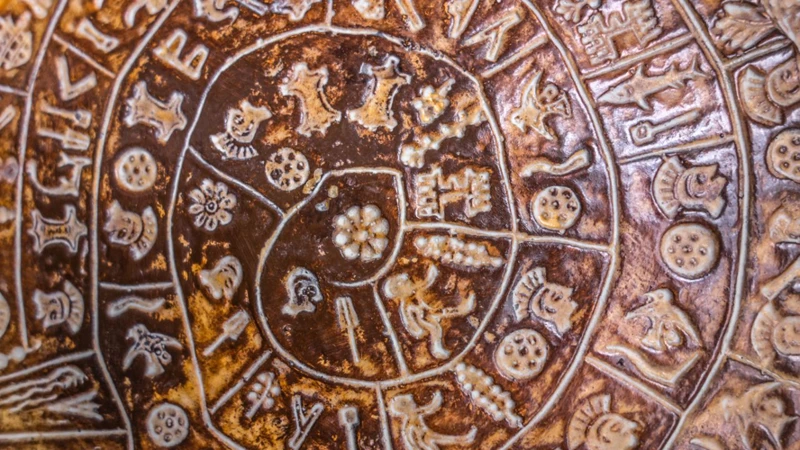
Ancient artworks hold a plethora of hidden secrets and mysteries waiting to be unveiled through meticulous analysis. These captivating artifacts, be it paintings, sculptures, or intricate carvings, offer a glimpse into the minds of our ancestors and the profound impact of planetary alignments on their artistic expressions. By delving into the world of ancient art, researchers and historians can unravel the influence of planetary alignments on the choice of symbols, the arrangement of elements, and even the colors used in these creations. The study of ancient art allows us to understand the connection between celestial bodies and the human experience, shedding light on the beliefs, mythologies, and cultural significance of different civilizations. Through careful examination, we can uncover the hidden messages and symbolic representations embedded within these artworks, transporting us back in time and illuminating our understanding of the past. Analyzing ancient artworks is like unlocking a treasure trove of knowledge and unraveling the cosmic threads that connect us to our ancestors.
The Influence of Planetary Alignments
The influence of planetary alignments on ancient art and architecture cannot be understated. These cosmic alignments played a pivotal role in shaping the beliefs, construction techniques, and symbolism found in various ancient civilizations. The alignment of celestial bodies, such as the sun, moon, planets, and even constellations, held great significance in ancient astrological practices. Astrology played a crucial role in interpreting and understanding the world around them. The alignment of planets was believed to influence various aspects of human life, including communication, decision-making, and even fate. For example, the power of Mercury, the planet associated with communication and intellect, was thought to impact the way individuals express themselves and make decisions. This belief in planetary influences extended to the realm of art and architecture. Ancient craftsmen and architects incorporated these planetary alignments into their designs as a way to harness the mystical energies and cosmic powers associated with specific celestial bodies. One common manifestation of this influence is found in the alignment of structures with significant celestial events like solstices and equinoxes. Temples and ceremonial sites, for instance, might be precisely oriented to align with the rising or setting sun on particular days, signifying important religious or agricultural events. This careful consideration of celestial alignments not only showcased the advanced astronomical knowledge of these ancient civilizations but also reinforced their spiritual and cosmic connection to the universe. The influence of planetary alignments in ancient art and architecture is a testament to the profound impact celestial bodies had on the beliefs, rituals, and physical constructions of ancient societies. By understanding these influences, we can gain deeper insights into their cosmological worldview and the role of celestial events in shaping their lives. The interplay between the celestial and the earthly reveals a remarkable blending of science, spirituality, and culture in ancient civilizations.
In ancient art and architecture, there lies a mysterious realm of hidden symbols and meanings. These intricate details and subtle clues left by ancient civilizations serve as keys to unlocking the deeper significance of their works. Symbols have long been used as a form of communication, conveying ideas, beliefs, and emotions that may not be easily expressed through words alone. The use of symbols in ancient art and architecture allows for a universal language that transcends time, enabling us to connect with the beliefs and values of our ancestors. For example, the depiction of celestial bodies such as the sun, moon, and stars often carries profound symbolism related to cosmic forces, divine powers, and the cycle of life and death. These representations may be linked to celestial myths and astrological beliefs, connecting earthly endeavors to the celestial realm. Certain symbols like spirals, crosses, or animals hold cultural significance and evoke spiritual meanings unique to specific ancient cultures. By decoding these hidden symbols and meanings, we can gain insights into the spiritual, social, and cultural contexts of the era. Unveiling the secrets of these symbols offers us a richer understanding of ancient art and architecture, enabling us to appreciate the depth of human creativity and expression.
Decoding Architectural Marvels: Uncovering Planetary Alignments
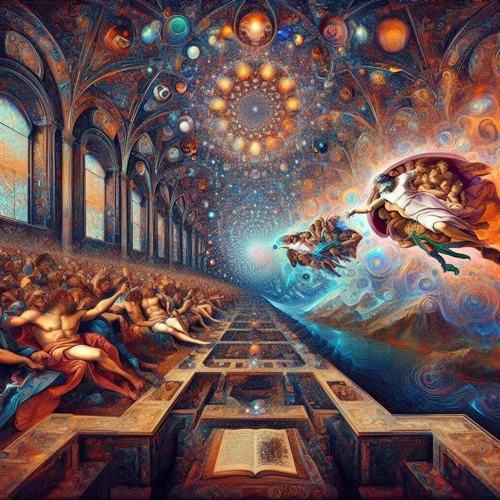
Decoding architectural marvels is a fascinating endeavor that allows us to uncover the profound connections between ancient constructions and planetary alignments. In the quest to understand the alignment techniques used by ancient civilizations, researchers have scrutinized the layout, orientation, and design of these architectural wonders. Through careful analysis, patterns and correlations have emerged, revealing a deliberate intention to align structures with celestial bodies. From the precision alignment of ancient temples to the orientation of pyramids, these structures exhibit a deep understanding of astronomy and the influence of planetary movements. The alignment techniques employed by ancient architects were driven by their beliefs in the cosmic order and the interconnectedness of the universe. By studying these celestial alignments, we can gain valuable insights into the astrological beliefs and cultural significance of ancient societies. Unlocking the secrets held within these architectural marvels not only deepens our understanding of the past but also highlights the significance of planetary alignments in shaping human history. Exploring the connection between architectural marvels and planetary alignments truly represents an awe-inspiring journey of discovery.
Alignment Techniques Used in Construction
Alignment techniques used in construction played a crucial role in ancient civilizations, as they sought to create structures that harmonized with celestial bodies and natural phenomena. One method employed was the solar alignment technique, where structures were oriented to capture the rays of the sun during specific times of the year, such as solstices or equinoxes. This technique can be observed in structures like Stonehenge in England, where the massive stone circles align with the rising and setting of the sun on significant astronomical dates. Another technique was lunar alignment, which involved aligning structures with the moon’s cycles and phases. The ancient Egyptians, for example, built the Great Sphinx and the Great Pyramids of Giza with precise lunar alignments. They aligned the causeways leading to the pyramids with the setting sun during specific lunar phases. Stellar alignment, utilizing star patterns, was also utilized in ancient construction. The Mayans, known for their advanced astronomical knowledge, built temples aligned with specific constellations and celestial bodies. One notable example is the temple of El Castillo in Chichen Itza, which aligns with the descending serpent during the equinoxes. These alignment techniques showcase the profound connection between ancient builders and the cosmos, highlighting their understanding of celestial events and their desire to integrate them into their architectural creations. By incorporating these alignment techniques, ancient civilizations were able to create structures that not only served functional purposes but also embodied their spiritual and astronomical beliefs.
Case Studies of Ancient Structures
Case studies of ancient structures provide fascinating insights into the intricate relationships between planetary alignments and architectural design. One notable example is the ancient city of Teotihuacan in present-day Mexico. The layout of this city is meticulously aligned with celestial phenomena, particularly the positions of the sun, moon, and stars. The Pyramid of the Sun, the largest structure in Teotihuacan, is situated in a way that aligns with the setting sun on certain important dates, such as the summer solstice. This alignment highlights the connection between the structure and the seasonal cycles, symbolizing the power of the sun in the agricultural and spiritual life of the ancient inhabitants. Additionally, the alignment of the Pyramid of the Moon with the Pleiades star cluster suggests a deep understanding of celestial movements and their significance in the cosmology of the Teotihuacan civilization. Another remarkable example is Stonehenge in England, which is renowned for its precise alignments with the solstices and equinoxes. The arrangement of the massive stones indicates a sophisticated knowledge of solar and lunar movements, providing a celestial calendar for the observance of important celestial events. These case studies demonstrate how ancient structures were intentionally designed to incorporate planetary alignments, influencing their purpose, symbolism, and cultural significance. The thoughtful integration of astronomical alignments into architectural masterpieces showcases the profound relationship between humans and the cosmos throughout history. Through these examples, we come to appreciate the level of astronomical knowledge and reverence for celestial bodies possessed by ancient civilizations.
Exploring the Astrological Significance
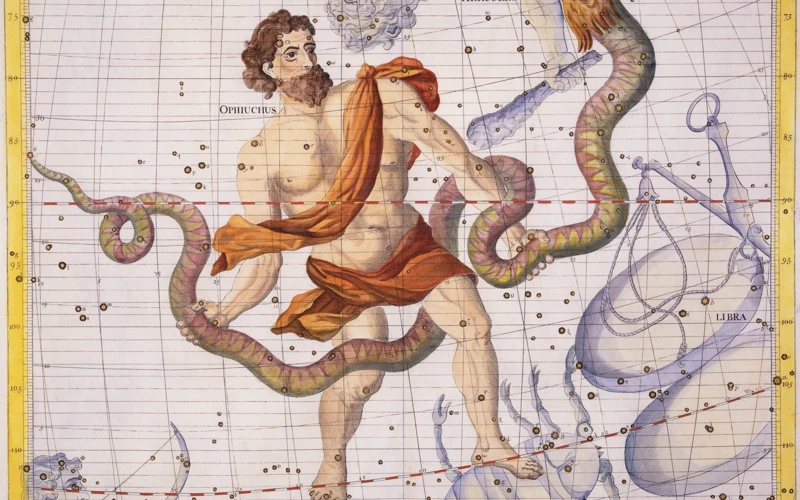
Exploring the astrological significance embedded in ancient art and architecture unveils a profound connection between celestial bodies and human belief systems. In many ancient cultures, the position of planets and stars held great importance, influencing religious practices, mythologies, and even daily life. Artworks and architectural structures often incorporated symbolism related to planetary alignments, reflecting the belief that these celestial bodies had a direct influence on human destiny and spirituality. Astrology, the study of celestial bodies’ influence on human behavior, played a pivotal role in ancient societies. The positioning of planets such as Mercury, associated with communication and decision-making in astrology, was regarded as powerful and influential. The constellations, such as Ursa Major (also known as the Great Bear), held significant meaning and were often depicted in ancient art as a celestial guide or harbinger of good fortune. These celestial connections, expressed through art and architecture, provided a framework for understanding the universe and our place within it. Exploring the astrological significance in ancient artworks and architectural designs deepens our appreciation for the interconnectedness between the celestial realm and human existence.
Planetary Symbolism in Art and Architecture
Planetary symbolism in art and architecture is a fascinating aspect that sheds light on the ancient understanding and reverence for celestial bodies. Throughout history, various cultures have incorporated the symbolism of planets into their artistic and architectural creations, creating a profound connection between the earthly and the celestial realms. In many ancient civilizations, each planet was associated with specific qualities and attributes, influencing the interpretation and representation of these planets in art and architecture. For example, the planet Mercury, known as the messenger of the gods in Roman mythology, was often associated with communication, intellect, and agility. In art, depictions of Mercury would often feature wings on his sandals and hat, symbolizing his swift movement and influence. These symbolic representations can be found in ancient paintings, sculptures, and architectural ornaments, serving as a testament to the significance that celestial bodies held in ancient cultures. The use of planetary symbolism in art and architecture not only showcased the divine connections between humans and the cosmos but also conveyed important societal and religious beliefs. By examining these artistic representations, we gain a deeper understanding of how these ancient civilizations perceived and honored the planets in their daily lives and rituals. The integration of planetary symbolism in art and architecture serves as a bridge between the earthly and celestial realms, offering valuable insights into the complex belief systems of ancient cultures.
Ancient Astrological Beliefs
Ancient astrological beliefs held a profound influence on the lives and perceptions of people in antiquity. In many ancient civilizations, including Mesopotamia, Egypt, Greece, and China, celestial bodies were believed to exert a powerful influence on the mundane affairs of human life. The movements and alignments of the planets, stars, and constellations were seen as omens and indicators of destiny. Ancient astrologers and astronomers meticulously observed the celestial events and interpreted their significance in relation to human affairs. The belief in the interconnectedness between celestial bodies and human experiences led to the development of various astrological systems and practices. The positions of the planets were associated with different qualities and characteristics, influencing aspects such as personality traits, health, relationships, and even political decisions. For instance, the planet Mercury was believed to influence communication and decision-making, shaping the destiny of individuals and societies. To understand the ancient astrological beliefs and their impact, it is crucial to delve into the cultural and historical contexts of each civilization. Ancient astrological beliefs provide us with an intriguing glimpse into the worldview and cosmological understanding of our ancestors, and how they perceived their place in the vast celestial tapestry. Exploring the ancient astrological beliefs allows us to appreciate the significance they held in shaping the lives and decisions of ancient societies.
The Legacy of Planetary Alignments
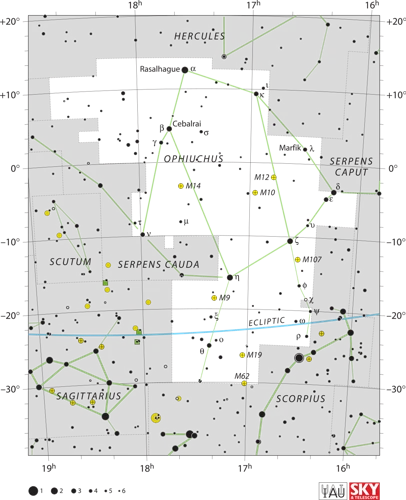
The legacy of planetary alignments continues to leave an indelible mark on our modern world. These ancient celestial connections have influenced not only the construction of ancient structures but also the way we perceive and interpret the cosmos today. Planetary alignments hold immense cultural, spiritual, and astrological significance, shaping the beliefs and practices of our ancestors. In the realm of astrology, the alignment of celestial bodies is believed to have a profound impact on human behavior, decision-making, and communication. Astrologers have long associated specific planetary alignments with certain personality traits, events, and even global phenomena. The enduring fascination with planetary alignments is evident in our continued exploration of astrology and the search for hidden meanings in ancient art and architecture. The preservation and conservation efforts dedicated to safeguarding these ancient structures reflect the recognition of their historical and cultural importance. The legacy of planetary alignments serves as a reminder of the enduring human quest to unravel the mysteries of the cosmos and our place within it. As we strive to comprehend the legacy of planetary alignments, we find ourselves in a perpetual journey to explore the interconnectedness of the celestial realms and their impact on our lives.
Modern Impact and Influence
The impact and influence of planetary alignments in ancient art and architecture extend beyond the past and continue to resonate in the modern world. While the interpretation and understanding of these alignments may vary today, the fascination with celestial bodies and their relationship to human creation remains strong. In contemporary art, we see artists drawing inspiration from ancient symbolism and incorporating planetary alignments into their work. The influence of ancient architecture can be seen in modern building designs, with architects and engineers considering the impact of celestial alignments on the positioning and layout of structures. The study of ancient planetary alignments has contributed to our understanding of astronomy and celestial mechanics, as well as our appreciation for the interconnectedness of different fields of knowledge. The legacy of the ancient belief systems and their connection to planetary alignments has left a lasting impression on our cultural, spiritual, and scientific perspectives. Whether we embrace the mystical and astrological aspects or simply appreciate the beauty of the cosmos, the ancient secrets of planetary alignments continue to inspire and captivate us in the present day. The influence of planetary alignments in ancient art and architecture transcends time, shaping our modern world and fostering a deeper connection to the celestial realm.
Preservation and Conservation Efforts
Preservation and conservation efforts play a crucial role in safeguarding the world’s ancient art and architecture for future generations. The vulnerability of these priceless cultural treasures necessitates the implementation of various strategies to ensure their long-term preservation. One such approach is conservation through documentation, where comprehensive records are created to document the condition, materials, and techniques used in the original construction or creation of these ancient artifacts. Advanced technologies such as 3D scanning and imaging are utilized to capture precise details, allowing for accurate replication or restoration efforts. Another essential aspect of preservation is preventive conservation, which focuses on creating suitable environments and conditions to minimize deterioration. This includes controlling temperature, humidity, and lighting to prevent the degradation of delicate materials. Additionally, efforts are made to protect these sites and artworks from natural disasters, vandalism, and theft through the use of security systems and controlled access. Collaborative initiatives between archaeologists, historians, conservationists, and local communities are paramount in preserving these valuable cultural treasures. Education and awareness programs are also crucial in promoting the significance of heritage conservation among the public and fostering a sense of responsibility towards protecting these irreplaceable remnants of our past.By employing these preservation and conservation efforts, we can ensure that future generations can continue to marvel at and learn from the ancient art and architecture that holds invaluable insights into our shared human history.
Conclusion

In conclusion, the exploration of planetary alignments in ancient art and architecture offers us a fascinating glimpse into the beliefs, knowledge, and skill of our ancestors. The profound connection between celestial bodies and human creations highlights the importance of astrology and cosmology in ancient societies. Through careful analysis and interpretation, we can uncover hidden symbolism, decipher the intricate alignment techniques used in construction, and understand the astrological significance of these ancient works. The legacy of planetary alignments extends beyond the ancient world, influencing modern art, architecture, and even our understanding of celestial bodies. Efforts to preserve and conserve these architectural marvels ensure that future generations can continue to appreciate and study the secrets they hold. As we continue to unravel the mysteries of planetary alignments, we gain a deeper appreciation for the interconnectedness of art, architecture, and the cosmos throughout history. The legacy of planetary alignments is a testament to the enduring impact of ancient beliefs and the mysteries that continue to captivate our curiosity.
Frequently Asked Questions

What is the significance of ancient art and architecture?
Ancient art and architecture hold immense significance as they provide valuable insights into the beliefs, culture, and achievements of ancient civilizations. They serve as a visual record of history and offer a glimpse into the social, religious, and technological aspects of the past.
How did planetary alignments influence ancient construction?
Planetary alignments played a crucial role in ancient construction. Ancient civilizations believed that the alignment of celestial bodies held symbolic meaning and cosmic energy. They incorporated these alignments into their architectural designs to create sacred spaces and enhance the spiritual significance of their structures.
What can we learn from studying ancient artworks?
Studying ancient artworks allows us to explore the cultural, religious, and mythological beliefs of ancient societies. Through these artworks, we can gain insights into their rituals, social structures, artistic techniques, and the stories they sought to tell.
How did ancient civilizations incorporate planetary alignments in their art?
Ancient civilizations incorporated planetary alignments in their art through symbolic representations and strategic placements. They would depict celestial bodies in their artwork, align architectural features to correspond with planetary positions, and use these alignments to convey deeper meanings and connections to the divine.
What are some famous examples of ancient structures that showcase planetary alignments?
One famous example is Stonehenge in England, where the placement of megalithic stones aligns with the solstices and equinoxes. Another is the Temple of Karnak in Egypt, which was designed to align with the path of the sun. These structures demonstrate the ancient fascination with celestial alignments.
Did ancient civilizations have a belief in astrology?
Ancient civilizations frequently incorporated astrological beliefs into their cultures. They believed that celestial bodies and their alignments held significance and influenced human affairs. Astrology played a role in religious rituals, decision-making, and understanding the cycles of nature.
What kind of symbols and meanings can be found in ancient artworks?
Ancient artworks often feature symbols representing celestial bodies, mythical creatures, gods and goddesses, and other elements of the natural world. These symbols hold various meanings, such as representing cosmic forces, fertility, protection, or specific deities.
How did ancient builders align their structures with celestial bodies?
Ancient builders used various techniques to align their structures with celestial bodies. These included observing celestial events, such as solstices or equinoxes, using architectural features like doorways or windows to align with specific celestial bodies, and incorporating specific numerical ratios or measurements into their designs.
What role did planetary symbolism play in ancient art and architecture?
Planetary symbolism played a significant role in ancient art and architecture. Celestial bodies were believed to have unique qualities and influences on human life, and their symbolic representations in art and architecture were intended to invoke those qualities and create a connection between the earthly and divine realms.
How do planetary alignments in ancient art and architecture continue to impact us today?
Planetary alignments in ancient art and architecture continue to captivate and inspire us today. They remind us of the ingenuity and spiritual connection of our ancestors, and their exploration fuels our curiosity about the cosmos and our place within it. Additionally, they provide a fascinating subject for study and research in disciplines such as archaeology, anthropology, and astronomy.
References
- The Astronomical Marvels of the Mayans
- Uncovering the Ancient Science of Sacred Spaces
- Navgrah Temple: Unveiling the Secrets of Planetary …
Frequently Asked Questions

How did ancient civilizations determine planetary alignments?
Ancient civilizations relied on the observation of celestial bodies and their movements to determine planetary alignments. They carefully tracked the positions of the planets, stars, and even the Sun and Moon over extended periods of time.
What were the reasons behind ancient civilizations’ fascination with planetary alignments?
Ancient civilizations believed that planetary alignments held great significance and were connected to various aspects of life such as agriculture, fertility, and even events like wars and natural disasters. They saw these alignments as a way to gain insight into the universe and make predictions about the future.
Did ancient civilizations incorporate planetary alignments in their artwork?
Absolutely! Ancient civilizations often depicted planetary alignments in their artwork, using symbols and representations to convey their beliefs about the cosmos. These artworks served as a visual reflection of their understanding of the universe and its connection to human life.
Ancient civilizations commonly used symbols such as suns, moons, stars, and various geometric shapes to represent different planets and their alignments. These symbols were often included in architectural designs, pottery, paintings, and sculptures.
How do researchers analyze ancient artworks to identify planetary alignments?
Researchers use various techniques to analyze ancient artworks for planetary alignments. They study the placement and orientation of celestial symbols, examine the overall composition of the artwork, and compare it to astronomical data to determine if any significant alignments are present.
What impact did planetary alignments have on ancient construction?
Planetary alignments influenced the design and construction of ancient structures. Architects and builders incorporated specific alignments into the orientation of buildings and the layout of sacred sites. This alignment was believed to enhance the spiritual significance and energy of the structure.
Can you provide examples of ancient structures that showcase planetary alignments?
Yes! The Great Pyramids of Giza in Egypt and Stonehenge in England are famous examples of ancient structures that exhibit remarkable alignments with celestial bodies. These structures were intentionally built to align with specific planets and astronomical events.
Ancient art often contained hidden symbols and meanings related to planetary alignments. These could include representations of celestial beings, mythical creatures, or specific arrangements of symbols that conveyed deeper cosmic truths and spiritual concepts.
How did ancient civilizations interpret the astrological significance of planetary alignments?
Ancient civilizations interpreted the astrological significance of planetary alignments based on their cultural beliefs and astrological systems. They associated specific qualities, characteristics, and influences with different planets and used this knowledge for everything from predicting individual fate to understanding societal trends.
Why is it important to preserve and conserve ancient artworks depicting planetary alignments?
Preserving and conserving ancient artworks depicting planetary alignments is crucial because they offer important insights into past civilizations, their beliefs, and their understanding of the cosmos. These artworks provide a valuable link to our shared human history and help us unravel the mysteries of the past.
References
- Munifacts and Astronomy: Celestial Alignments in Ancient …
- Ancient Aliens: Great Pyramid’s Shocking Precision (Season 12)

